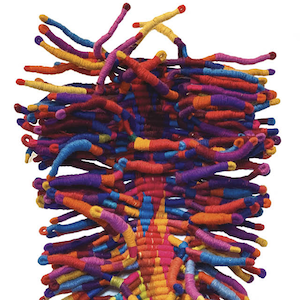The Golden Age
By Imogen Hart
‘I was eight years old and I was living in Courbevoie, France with my family and La Belle Époque (the Golden Age) was in its prime. The camera had been invented and I was using the camera that my father had gifted me to take photos of my brother, my family and my nanny. This helped me to perfect my photography skills at a young age. This period of my life was so life-changing and miraculous that an entire era was named after it. The Belle Èpoque was a period of history crucial to creatives because it helped to expand the meaning of art in so many ways, for me and for many others.
It was after the Russian War and before the First World War, we referred to this time period as ‘the golden age’ as it was such a phenomenal time to exist in comparison to the uncertainty of war. It was a time where creativity and artistry flourished, wages were increased, and feminism rose.

The Second Industrial Revolution had been and gone, chemicals such as gasoline were introduced meaning that my family was able to travel from place to place with ease. Steel was introduced which meant that new buildings were being erected across France. In addition, the phenomenal invention of electricity was made; allowing my family and thousands across France to have things such as central heating and light at the flick of a switch. It was truly a magical time. Nowadays these seem like minor discoveries but living through this time period as a young boy was incredibly life-changing.’
La Belle Èpoque was an unmistakably beautiful time for artistry, this is reflected in its name which translates to “The Beautiful Age”. During this amazing period, the traditional art of drawing what-you-see took a back-seat and abstract art was introduced. Drawing on themes of cubism, impressionism, imperialism, and post-imperialism; Belle Époque was a time of self-expression and growth within the art industry. This allowed people to explore all realms of artistry. Following this, there was a new appreciation for art within France; theatres and ballrooms were built and creative people excelled. In addition, the camera was introduced, allowing people to capture moments with the click of a button; something that many never thought possible! It is things like this that make La Belle Èpoque such an interesting and truly remarkable era, hence the name ‘The Golden Age’.

Jacques-Henri Lartigue was a french photographer and artist who rose to fame from the photographs that he captured as a child during La Belle Époque. Photographing his brother, family members and his nanny; Jacques-Henri was able to capture images of people mid-movement. This skill put his photographs on a pedestal making him different to other photographers of that time.
If you would like to find out more about the wonderous life of Jacques-Henri Lartigue during La Belle Époque, then read ‘Lartigue: The Boy and the Belle Époque’ written by journalist and author Louise Baring. Louise Baring has covered a range of photographers in her writing. All of her books published are centred around a different photographer; allowing her a broad realm of knowledge surrounding photography within different periods. Her latest book “Lartigue: The Boy and the Belle Époque’ is set for publication on the 16th of April.

‘Lartigue: The Boy and the Belle Époque’ written by Louise Baring follows the story of Jacques-Henri Lartigue as a boy during La Belle Époque. Despite Jacques-Henri Lartigue being recognised for his photography skill in his later life; the photographs that kickstarted his career were taken by him at age eight. ‘Lartigue: The Boy and the Belle Époque’ is a particularly interesting book that gives a spotlight to an era often overlooked by the first World War.

This book is about Lartigue growing up in an undoubtedly extraordinary and world-changing time where everything surrounding him was being developed. The introduction of the camera was one of these things. The concept of being able to capture a moment to reflect on in years to come was unimaginable for the people living in this period. For this reason, the invention of the camera played a huge role in making Lartigue’s childhood magical and giving him the spotlight that he has today.
‘Lartigue: The Boy and the Belle Époque’ is being published by Thames and Hudson and will be available for purchase from the 16th of April.
If you enjoyed The Golden Age, The Belle Èpoque then why not read The monocle movie man





